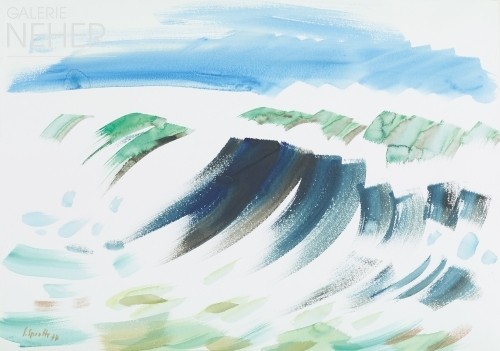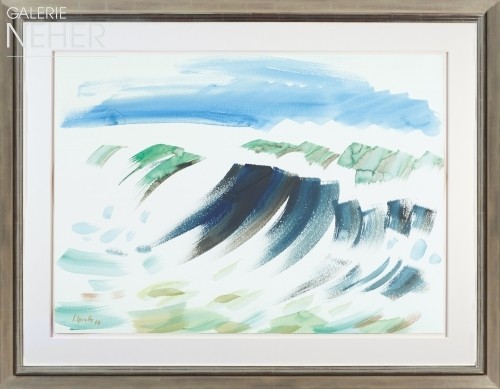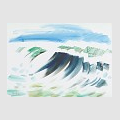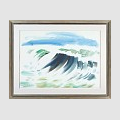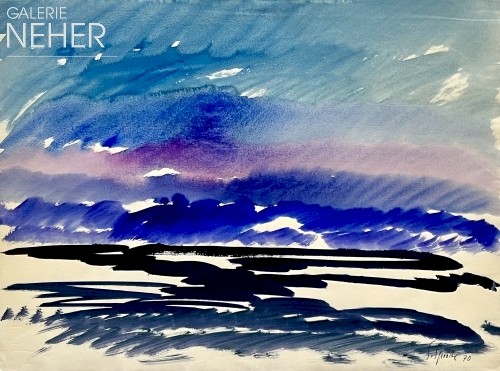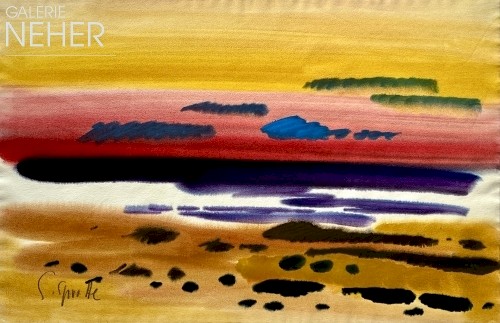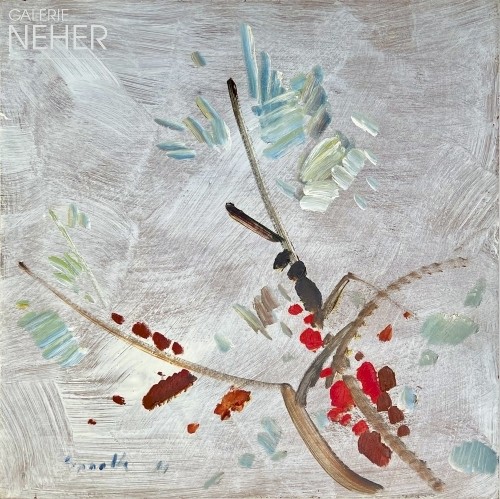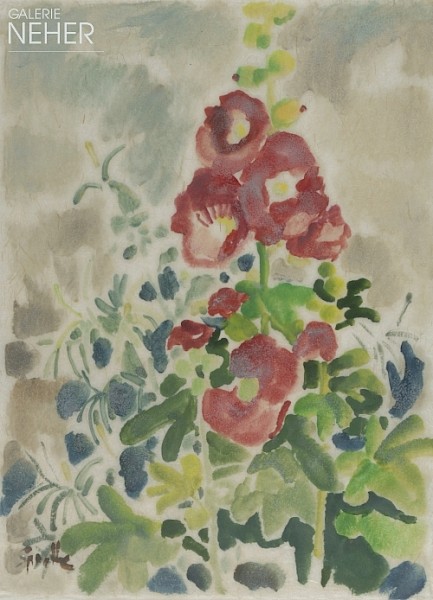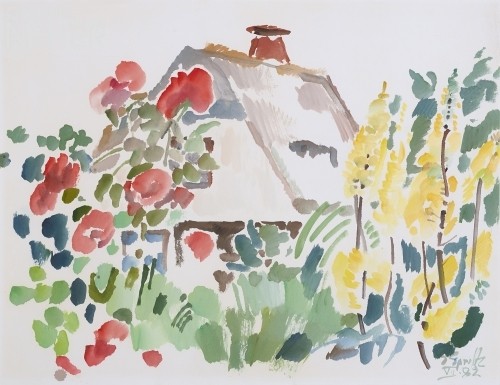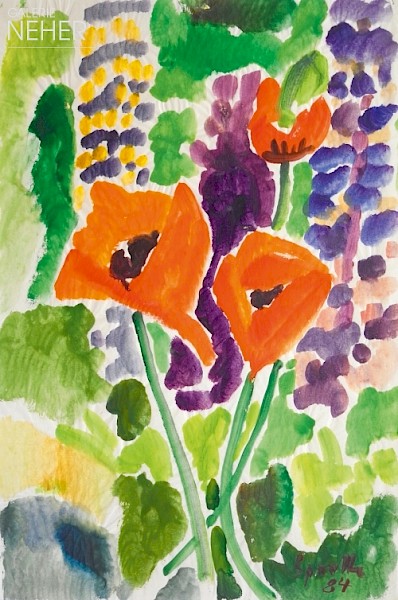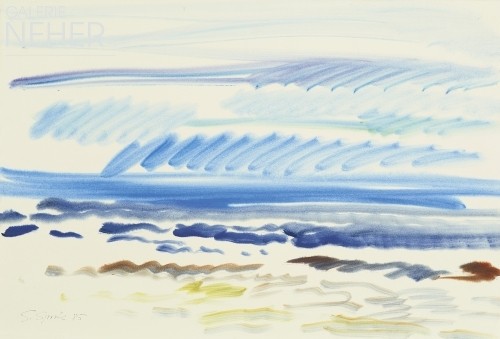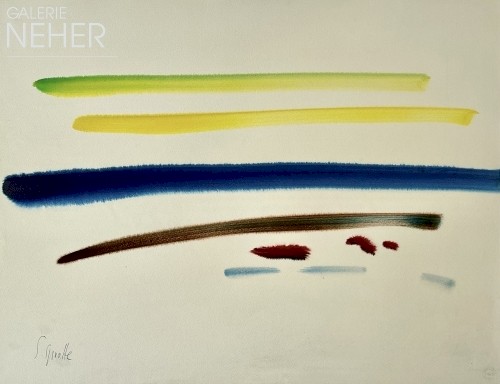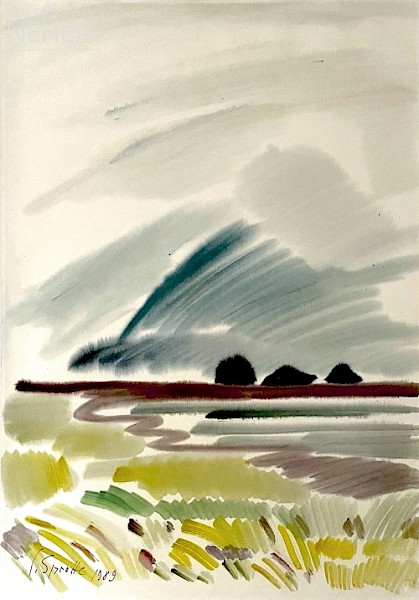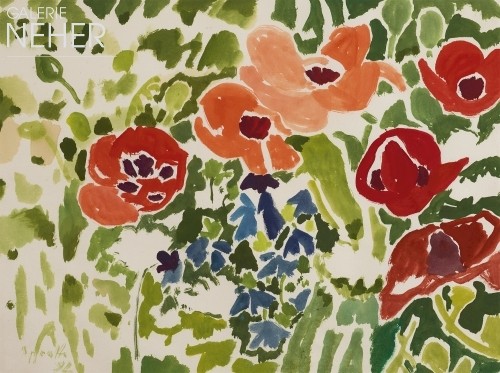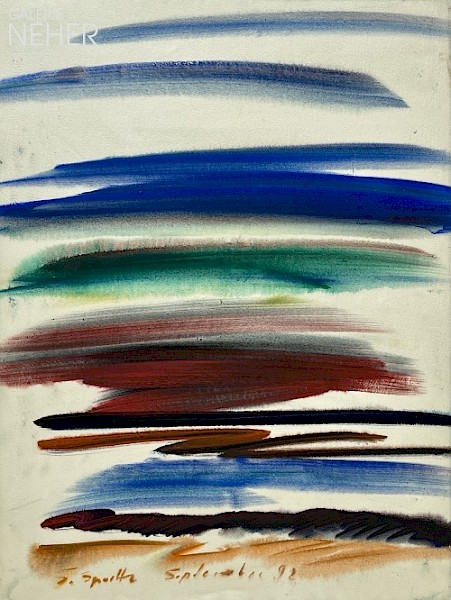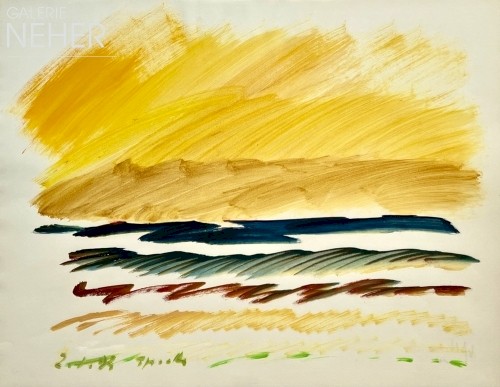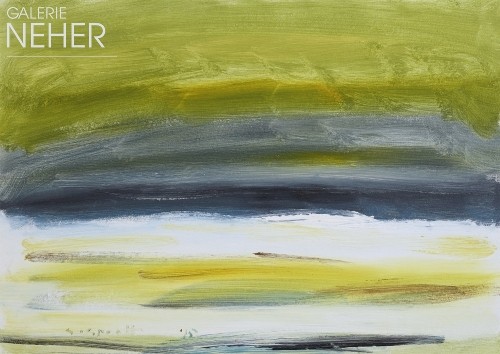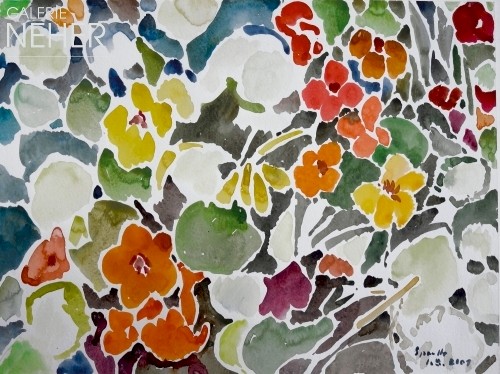Siegward Sprotte - Rhythmus und Farbe (Rhythm and Colour), 1977
Gouache on handmade paperboard
73 x 102 cm / framed 103 x 132 cm
28 x 40 inch / framed 40 x 51 inch
Signed, dated bottom left "S. Sprotte 77"
- with craftsman's frame -
N 9340
15,800 €
Provenance:
Nachlass des Künstlers
Exhibitions:
Galerie Neher, Essen, Kunst aus dem 20.Jahrhundert, Frühjahr 2019, Katalog mit farbiger Abbildung Seite 61
Siegward Sprotte - Rhythmus und Farbe (Rhythm and Colour), 1977
Gouache on handmade paperboard
73 x 102 cm / framed 103 x 132 cm
28 x 40 inch / framed 40 x 51 inch
Signed, dated bottom left "S. Sprotte 77"
- with craftsman's frame -
N 9340
15,800 €
Provenance:
Nachlass des Künstlers
Exhibitions:
Galerie Neher, Essen, Kunst aus dem 20.Jahrhundert, Frühjahr 2019, Katalog mit farbiger Abbildung Seite 61
About the work
Born in Potsdam in 1913, Siegward Sprotte possessed the ability to forge an entire cosmos with just a few judicious strokes of his brush. In this present work, his brushwork appears to assume the character of calligraphic symbols. Having explored figurative painting at the beginning of his career, Sprotte eventually turned his back on representational art from 1958 onwards. Although he continued to paint and draw landscapes containing topographical references, they still defy exact localisation - a development which can be traced back to Sprotte's early years. During his military service and a long period of invalidity in the early 1940s, he had collaborated with Hermann Kasack (1896 Potsdam – 1966 Stuttgart) on his essay "On the Chinese Element in Art" (1941) and engaged in intensive study of Eastern art. Kasack, who at the time was chief editor at the publishing house Verlag S. Fischer regarded this "Chinese element" as fundamental to the artist's approach to painting. Characteristic of this fundamental approach was "intimation, omission, unobtrusiveness, exemplary concentration, unreflective simplicity, and the application of the associative and counter-referential."
When one views the late works of Siegward Sprotte armed with this knowledge, the commonalities become quite apparent. Sprotte too favours subtle adumbration, rather than precise articulation in his painting, where less is more. It is not the features of the landscape which lie at the heart of his pictorial concept, but the seascape, on whose the essential characteristics, including the dunes and the ocean vistas, he focuses. This entire composition is remarkable not by virtue of its complexity but due to the simplicity of the representation. Alone this rigorous reduction and distillation affords the viewer the intellectual freedom to feast on the beauty of reality - which shall always defy reproduction.
(Andrea Fink)
Text authored and provided by Dr Andrea Fink, art historian
The art historian, curator and freelance publicist Andrea Fink studied art history, cultural studies and humanities, modern history and philosophy in Bochum and Vienna. Doctorate in 2007 on the work of the Scottish artist Ian Hamilton Finlay. As a freelance curator and art consultant, her clients include, among others, the Kunstverein (art association) Ahlen, Kunstverein Soest, Wella Museum, Museum am Ostwall Dortmund, ThyssenKrupp AG, Kulturstiftung Ruhr, Osthaus Museum Hagen, Franz Haniel GmbH, Kunsthalle Krems, Austria.
